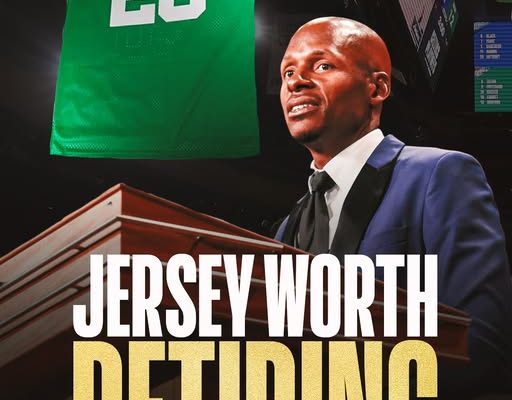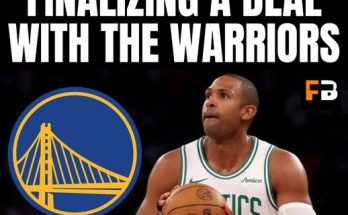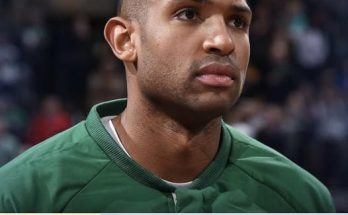Shoutout to one of the smoothest shooters the game of basketball has ever known—Ray Allen, who just turned 50 years old and continues to command admiration, respect, and gratitude from fans across the globe. But for one fanbase in particular, the name Ray Allen holds a deeper, more emotional resonance. To the Boston Celtics faithful, Allen is not just an all-time great; he is a hero forever immortalized in green for helping to deliver the franchise’s 17th NBA championship banner in 2008. That championship solidified his place in Celtics lore, and even years later, his contributions still echo in TD Garden every time a shooter heats up from beyond the arc. Ray Allen wasn’t just a part of that 2008 team—he was a catalyst for its success, a key cog in a machine that brought Boston back to basketball glory after a two-decade drought.
Ray Allen’s path to the Celtics was not a conventional one. He came into the NBA as the fifth overall pick in the 1996 NBA Draft, a loaded class that included the likes of Kobe Bryant, Steve Nash, and Allen Iverson. Allen was originally drafted by the Minnesota Timberwolves but was traded to the Milwaukee Bucks for Stephon Marbury. It didn’t take long for him to establish himself as one of the best shooters in the league. He had a fluid shooting motion, the kind that coaches would tell young players to study and emulate. His release was quick, effortless, and elegant. That textbook form helped him carve out a niche as an elite scorer, and he continued that excellence during his stints with the Bucks and later the Seattle SuperSonics.
But it was in Boston where Allen’s career underwent a transformative shift, both in terms of legacy and impact. When Danny Ainge pulled off the moves to bring Allen and Kevin Garnett to join forces with Paul Pierce in 2007, it sent shockwaves throughout the league. This was the formation of a true “Big Three” before such superteams became the norm. The Celtics, who had struggled mightily in the preceding seasons, were suddenly vaulted into title contention overnight. It wasn’t just about the names on the roster—it was about chemistry, sacrifice, and a shared hunger to win. Allen, Garnett, and Pierce were all stars in their own right, but they each understood the necessity of adaptation to make it work.
Allen had to adjust his game the most. He went from being a primary scoring option and shot-creator to a specialized role that emphasized floor spacing, off-ball movement, and clutch shot-making. And he did it with grace. Instead of demanding the ball or pouting about fewer touches, Allen doubled down on conditioning and precision. He became a master of navigating screens, curling off pin-downs, and relocating to the corners for dagger threes. His basketball IQ and commitment to the team ethos allowed him to thrive even in a system that no longer revolved around him.
The results were immediate. The 2007-2008 Celtics were dominant from the start. They finished with the best record in the NBA and boasted the league’s most suffocating defense, anchored by Garnett. But it was Allen’s offense, especially his outside shooting, that often served as the perfect complement. He stretched defenses, forced mismatches, and opened driving lanes for Pierce and Rajon Rondo. In the NBA Finals against the Los Angeles Lakers, Allen’s value came into full view. His 7-of-9 performance from three-point range in Game 6 of the Finals, which clinched the championship, was a masterclass in shooting excellence under pressure. That game was symbolic not just of his technical brilliance but of his mental fortitude. He didn’t just hit shots; he buried teams.
When that final buzzer sounded, and the Celtics secured Banner 17, the Garden erupted, and Allen stood triumphant—one-third of a championship core that restored the glory of a franchise steeped in tradition. That banner wasn’t just another piece of cloth hanging from the rafters; it was a statement that the Celtics were back, and Ray Allen’s fingerprints were all over it.
For Celtics fans, that championship carried immense weight. The team had not won a title since 1986, and the city had endured years of mediocrity, near misses, and rebuilding phases. Allen’s arrival symbolized a turning point. His dedication to craft, his willingness to sacrifice, and his clutch performances became an embodiment of what it meant to be a Celtic. That relationship between the fans and Allen was forged in those playoff battles, those high-stakes moments where his calm demeanor and cold-blooded shooting made all the difference.
Of course, Allen’s career did not end in Boston. He would later join the Miami Heat in 2012, a move that sparked a fair bit of controversy among Celtics fans and even some of his former teammates. But basketball is a business, and players must make decisions that align with their careers and personal lives. Still, for many Boston loyalists, that departure never fully diminished what he gave to the team. After all, legacies aren’t defined by their endings alone—they’re defined by moments. And the moments Ray Allen delivered in green and white will live forever.
Looking back now as Ray Allen hits the milestone age of 50, it’s fitting to reflect not just on his stats—which are astounding—but on his influence. He retired as the NBA’s all-time leader in three-point field goals made, a record that stood until Stephen Curry surpassed it in 2021. But numbers only tell part of the story. Allen was a pioneer in the evolution of the game. He helped usher in an era where the three-point shot became central to offensive strategy. He was a prototype for the modern off-ball shooting guard, and his mechanics have become the gold standard in shooting clinics across the world.
Beyond the court, Allen has also distinguished himself as an author, a philanthropist, and a thoughtful voice in discussions about athlete health, education, and racial equity. He has used his platform for more than just accolades—he’s used it to teach and inspire. His autobiography, From the Outside, gives fans a deeper look into the disciplined, introspective mind that fueled his NBA success. That level of self-awareness, paired with his relentless work ethic, is part of what makes his legacy so enduring.
And yet, for all that he’s accomplished across several franchises, it is the 2008 Celtics that define the most emotionally resonant chapter of Ray Allen’s storied career. That championship run unified a fractured fanbase, inspired a generation of players, and set a new standard for what a team-first mentality can accomplish in an age of egos and superstar branding. Allen’s presence in that run was not peripheral—it was central.
Every time a young player today catches fire from deep, there’s a bit of Ray Allen in that performance. Every time a coach tells a shooter to square their shoulders, set their feet, and follow through, it’s likely Allen’s form that comes to mind. He wasn’t just a shooter—he was the shooter, an artist with a basketball, whose rhythm and release bordered on poetic. He didn’t just change games; he changed outcomes. He didn’t just score points; he sealed legacies.
So as Ray Allen turns 50, it’s more than a birthday celebration—it’s a moment to appreciate a career built on fundamentals, humility, and fierce competitiveness. It’s a moment to remember Game 6 in 2008, the chills of watching him rise and fire, the sound of swishes in the Garden, the arms raised in triumph, and the faces of Celtics fans drenched in joy.
Ray Allen will always be remembered as one of the smoothest shooters in basketball history. But to the city of Boston, he is so much more than that. He is a legend, a champion, a Celtic forever etched in time for helping hang Banner 17. Happy 50th, Ray Allen. The game will never forget you—and neither will Boston.



